In his mid thirties, an age at which most ambitious artists were making themselves as visible as possible, John Frederick Lewis (1804–76), a successful painter of sporting subjects and Mediterranean scenes, vanished from London for more than a decade. It was an audacious move. He spent two years in Italy, then followed in Lord Byron’s footsteps, travelling through Albania, Corfu, Athens and Smyrna, and after a year in Constantinople he sailed for Egypt. Once there Lewis fell in love with Cairo, and rather than returning to England with his sketchbooks he set up home, staying until 1851. Those years might have been something of a biographical blank had it not been for a visit in 1844 from his old friend William Makepeace Thackeray, who included a somewhat excitable account in his travel book Notes of a Journey from Cornhill to Grand Cairo (1846). What, asked the novelist, could possibly be preventing this man-about-town from returning home to his London club and his fretful sisters? Well, it was just that. It was the evening parties, the white kid gloves, the starched neckcloths, the newspapers. In Cairo Lewis could pack away his European suits, put on comfortable Egyptian clothes and live, in Thackeray’s terms, ‘like a languid Lotus-eater – a dreamy, hazy, lazy, tobaccofied life’. And when, Lewis told his friend, Cairo became a touch too civilised, what with Englishmen passing through and old acquaintances calling (rather pointed remarks for him to make in the circumstances), he liked to retreat to the desert where he could smoke, ride Arab horses and contemplate the stars; where, in short, there was ‘still more nothing to do than in Cairo’.
Quite how much of this dolce far niente stuff was genuine remains a moot point. Was Lewis posing for a literary portrait in his embroidered jacket and tarboosh, impressing his friend with the setting of his ancient ‘many-windowed, many-galleried house’? Was Thackeray indulging in an Orientalist fantasy? One suspects a fair measure of both. Lewis’s identity – and the extent of his play-acting – were, and remain, an intriguing puzzle. The Watts Gallery’s exhibition ‘John Frederick Lewis: Facing Fame’, curated by Briony Llewellyn and Cicely Robinson, sets out to address these issues.
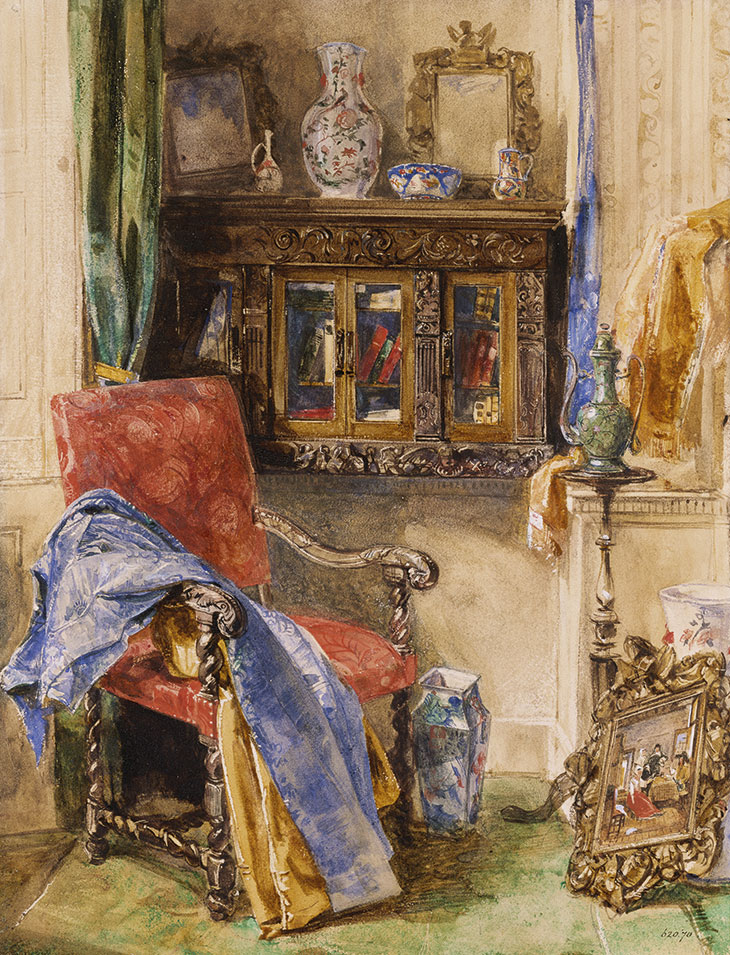
Interior of a Studio (c. 1830), John Frederick Lewis. Victoria and Albert Museum, London
The show begins by adroitly tracing Lewis through his boyhood and early career, beginning with a charming album-page of self-portraits in which he presents himself variously as an introspective thinker; as an aspiring artist, bent over his drawing; and as an elegant young man trailed by his dumpy little brothers. More unexpectedly, when he begins to specialise in sporting and genre subjects, his features continue to appear – there he is on horseback in one picture, surveying Windsor Great Park for deer, and in another lolling, plaid-suited, in a Highland cottage. When Lewis depicts his studio, with its ornate frames and Japanese ceramics, though the armchair is empty it somehow establishes what the label nicely calls the artist’s ‘absent-presence’. So far, so intriguing. Things take an even stranger turn when he gets to Egypt, and his own features still appear again and again; not, as before, as a barely significant detail in an otherwise busy composition, but as a principal element. In a series of fine single-figure paintings brought together at the Watts Gallery, Lewis represents himself as a Syrian sheikh scanning the horizon of the Sinai desert; as the suave ‘bey’ of a Cairene household, lowering his eyelids as his servant offers him a water pipe; as an impassive carpet-seller in the Bezestein bazaar. In none of these, however, does he quite meet our eye.
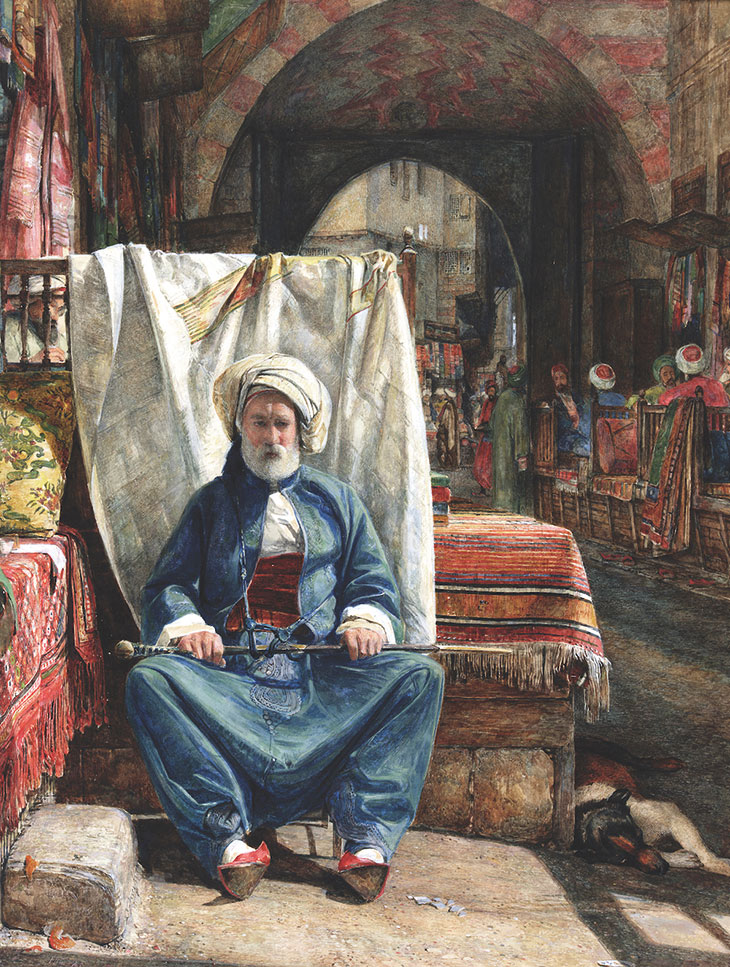
In the Bezestein, El Khan Khalil, Cairo (1860), John Frederick Lewis. Blackburn Museum and Art Gallery
What was Lewis up to? And why did no one seem to notice when the pictures were exhibited? (At any rate, if they did, they kept quiet about it.) On the one hand, giving these men his own face seems like a flagrant case of what we would now regard as cultural appropriation. But on the other, it can be seen as an acknowledgement of his own artifice: how can I do anything other than put too much of myself into these pictures? – he seems to say.
Whatever Thackeray imagined about Lewis’s Egyptian existence, the exhibition suggests he was not as idle as all that. Lewis made enough sketches in Egypt to fuel a lifetime’s compositions when he returned to England. Included here is a magnificent drawing of the courtyard of his house, showing its complex architecture and decoration in exceptionally intricate detail; on his return Lewis mined this study and others like it for numerous pictures. From his studio in quiet Walton-on-Thames, Lewis painted courtyards and coffee houses, the Khan al-Khalili textile market with its shopfronts and merchants’ stalls and gorgeous interior scenes like The Siesta (1876), for which his wife Marian modelled; a calm, cool space enclosed by lattice screens through which lush gardens and a view of the Nile beyond can be glimpsed.
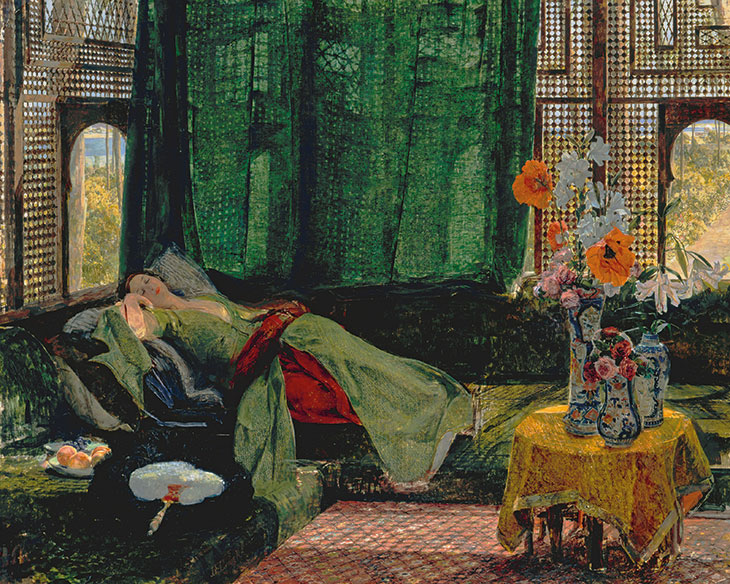
The Siesta (1876), John Frederick Lewis. Tate, London
It was perhaps Lewis’s capacity for fine detail that created the illusion of reportage for a Western audience. Wondering at his depictions of camels, John Ruskin remarked that they had ‘as much painting beneath their drooping fringes as would, with most painters, be thought enough for the whole head’. That, and the authority brought by Lewis’s first-hand knowledge of both city and desert. But things were not quite as they seemed. In 1850 Lewis announced his imminent return to London by sending a work to the Water Colour Society’s annual exhibition. The Hhareem depicted in deliciously vivid colours the moment an Abyssinian slave is presented to the bey as a potential concubine. It seemed to offer a peep through the lattice into a private world of beauty, intrigue and eroticism, while making other contemporary genre pictures look hopelessly drab. And it reintroduced Lewis to the London art world with a triumphant fanfare. Yet, as a Western man, he could not have witnessed any such scene in Cairo: the picture was, as so many in this absorbing exhibition, a beautiful, highly wrought and utterly convincing layering of fact and fiction.
‘John Frederick Lewis: Facing Fame’ is at the Watts Gallery, Guildford, until 3 November.
From the October 2019 issue of Apollo. Preview and subscribe here.
Unlimited access from just $16 every 3 months
Subscribe to get unlimited and exclusive access to the top art stories, interviews and exhibition reviews.


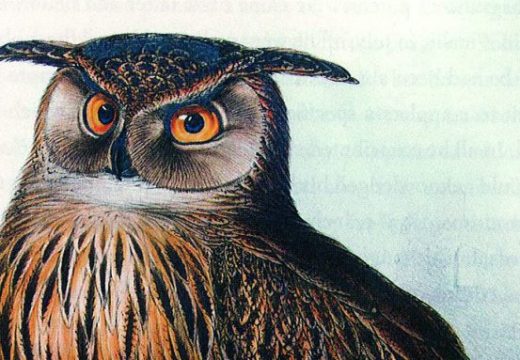
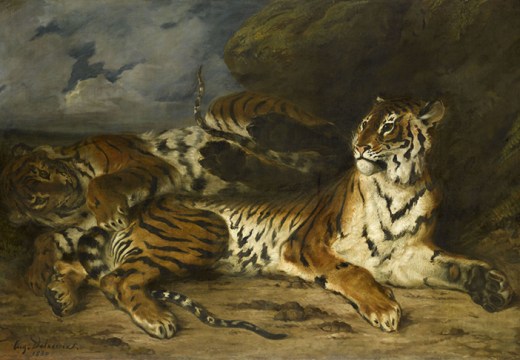
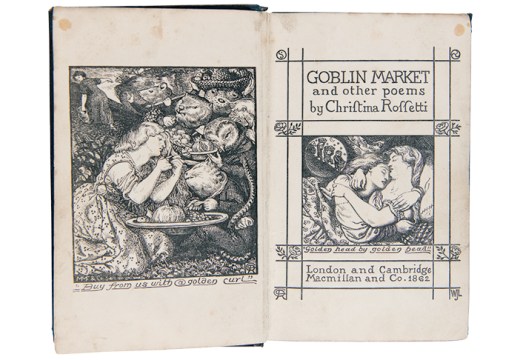








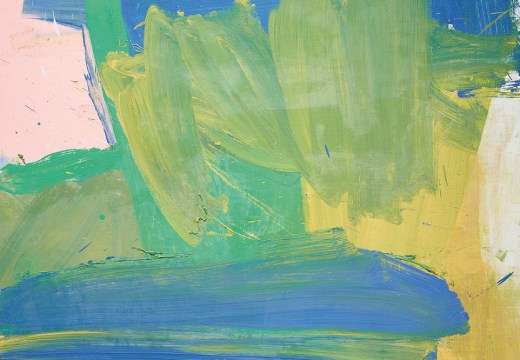
![Masterpiece [Re]discovery 2022. Photo: Ben Fisher Photography, courtesy of Masterpiece London](http://www.apollo-magazine.com/wp-content/uploads/2022/07/MPL2022_4263.jpg)
Why are fathers so absent from art history?